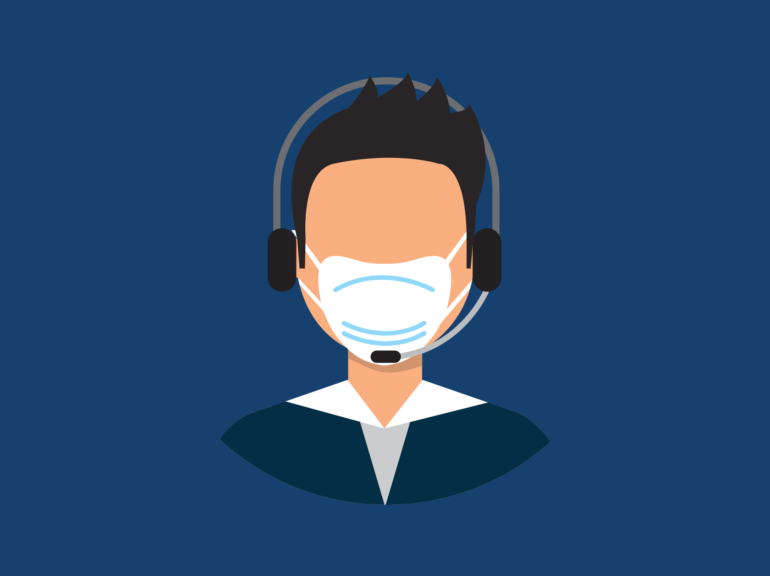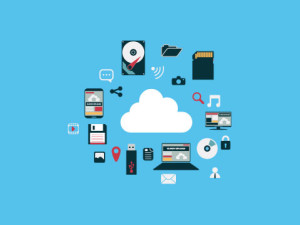
Work at Home (WAH)
A Work at Home (WAH) agent model can provide critical flexibility and coverage options as call volumes fluctuate and as contact center sites have shut down due to COVID-19. Additionally, moving staff to a home office environment can be key to helping prevent the spread of the virus. McIntosh has the following recommendations when considering a WAH strategy:
- If WAH is currently a part of your operational plan, consider increasing the WAH staffing levels.
- If you do not have WAH staff or cannot send all agents home, we suggest:
- Set-up and utilize WAH for as many agents within your workforce as possible, communicating and monitoring their performance frequently.
- Give first priority to sending home agents who have an underlying medical condition; they are more susceptible to the virus and can be better protected at home.
- Consider sending agents over the age of 60 home to work—they also are more vulnerable to the virus and would be less susceptible to infection with reduced social interaction.
- After sending at-risk agents at home, prioritize agents with higher tenure and top performers for the WAH assignment as they will likely be better candidates for a more autonomous work environment.
- Supervisors should use a video conference room or a chat application to communicate with remote workers (in the absence of virtual platforms, cell phone or iPad “Face Time” calls can be equally effective). Supervisor status should be updated on virtual platforms throughout the day so that agents know when the supervisor is available.
- For agents new to the WAH environment, frequent remote call monitoring is advised to ensure they remain efficient and effective in the new environment.
- Set-up a technical help desk for connectivity and application troubleshooting for WAH agents and supervisors. If you do not create this technical help desk, you will lose productivity as employees struggle to solve simple through complex issues with their systems.
- If laptops for WAH agents and supervisors are not available or in short supply, send desktop systems and monitors home with employees. Provide detailed, written instructions for set up and advise technical help desk to expect calls for assistance.
- Reimburse employees for broadband access during WAH (partial or full) as a good will gesture.
- Establish twice weekly check-ins among the supervisor or front-line leader team to share insights and learnings. Encourage frequent communication across leaders, both via email and real-time channels (e.g., IM/chat, message boards, etc.).
- Consider having Zoom or Google+ Hangout rooms for agents and supervisors to enter for individual supervisory discussions and coaching sessions.
- Consider establishing a Zoom or Google+ Hangout room that is open at all times for agents to stop by for face time with a supervisor to ask questions or just connect and stay in touch. The room should be staffed by at least one supervisor at all times; establish or assign a coverage schedule.
- For employees with a higher risk of infection, if WAH is not an option for your firm, discuss a potential leave. Protecting the health of vulnerable staff members is critical during this time.
Brick & Mortar
For employees remaining in the contact center facility, take the following steps to mitigate spread of the virus when onsite.
SOCIAL DISTANCING
- Practice social distancing (minimum six-foot distance between staff) in the facility and on the production floor. Apply floor labels indicating where employees should stand to achieve the six-foot gap.
- Do not utilize subject matter experts (SMEs) to walk the floor and answer questions or take escalations. The more appropriate approach is to set-up a queue and have agents call the queue with questions, or have agents transfer escalated calls to the queue.
- Minimize or eliminate the practice of “shared” workstation/seating.
- For employees remaining at the site, have at least one empty seat separating agents (based on the size of your workstations, you may need two empty seats). Where possible have a row separating agents. Utilize administrative or support workstations for agents if the support staff is working remotely.
- Install partitions between workstations (e.g., Lucite, Plexiglas, etc.).
- Consider a hybrid model with employees working from home 2-3 days per week and then back in the office for the remaining days to reduce site staffing levels. Another option is to alternate weeks, with designated groups of employees working in the office one week and then at home the next week.
- Reduce traffic in common areas such as break/lunch rooms by encouraging employees to maintain social distance when on break/lunch and by taking breaks/lunch at their desk.
- Consider eliminating on-site food services and encourage employees to brown bag meals from home. Or, reduce employees’ need to leave the building for lunch by paying a local restaurant to deliver “no hands” cold lunches that can be made available at different points in the center (multiple locations reduces congestion).
- Advise employees to take the stairs more often—it promotes good health, and there is less potential of infection than in a crowded elevator.
- Discontinue supervisory walk-abouts and huddles, replacing the face-to-face meetings with chat messaging and virtual performance boards. Discontinue side-by-side call monitoring and conduct remote monitors only.
- As in the WAH recommendations, consider deploying Zoom or Google+ Hangout rooms for agents and supervisors to enter for individual supervisory discussions and coaching sessions.
- Understand that absenteeism may increase as employees’ home environments change (child/senior care challenges, etc.) and as they cope with the mental strain of increased contact volumes and virus fears. Develop short-term policy modifications to give employees scheduling flexibility, where possible, so they do not quit their jobs due to concerns over attendance “points.”
- Encourage employees to stay home if they do not feel well, regardless of the amount of sick time they have remaining in their PTO banks.
- Remind employees that congregating in the parking lot and gathering in cars during breaks and lunches is also to be avoided—social distancing applies in open spaces as well as in the building.
Hygiene & Wellness
Practice good hygiene within the site and post the CDC bulletin containing helpful tips.
- Follow state, local or company mandates regarding masks/face coverings. Have disposable masks available for employees who may forget to bring one.
- Encourage employees to take their temperature at home before coming to work each day, and conduct temporal temperature screenings at the site before employees enter the building. Employees should not be allowed in the building if they are running a fever of 100 degrees or more, and they should not return to work until they have been fever free for 24 hours or longer. Remind them this is not a time to be stoic and “work through it.” They could risk the health and safety of themselves as well as many others.
- Increase the frequency and thoroughness of cleaning public areas and commonly touched surfaces such as doorknobs, security pads, elevator buttons and walls, bathrooms, stairway railings, etc.
- Provide disinfectant wipes for agents to wipe down keyboards, mouse, phone, desk surface, armchair supports, etc. before each shift and/or after each break/lunch. The availability of sanitization supplies must be a top priority in a “shared” workstation environment.
- Eliminate workstation and/or headset sharing; if sharing must continue to stay operational, immediately develop and implement a sanitization process that is regularly implemented at each workstation between shifts, no exceptions.
- Post signs in the bathrooms and kitchens reminding your staff to wash hands with soap and water for at least 20 seconds and to do so frequently. This may be the single most effective action to prevent the spread of the virus.
- Advise employees to cover their mouth and nose when sneezing or coughing and to avoid touching their faces. They should wash their hands immediately after sneezing or coughing.
- Advise employees to avoid shaking hands or greeting their co-workers with a hug—fist or elbow bumps will suffice (even though they typically would violate the six-foot social distance guidance); a smile and a hand wave is likely the safest option.
- Install hand sanitizer stations at all building entries and throughout the facility.
- Encourage employees to avoid social gatherings with more than 10 people, both in the office environment and after work.
- If an employee has a family member with a positive COVID-19 test result, the entire family should remain at home. Friends/family who have been diagnosed and are quarantined should not be visited. Honor the quarantine period.
Operations & Communication
OPERATIONS
- Identify opportunities to automate calls where possible. Defer calls to later timeframes or other channels. Adjust IVR queue messaging to advise customers of alternate contact methods/channels.
- If network bandwidth and connectivity are an issue due to increased use of virtual meetings, etc., consider reducing and/or discontinuing screen recording to preserve bandwidth.
- Identify reporting and dashboard modifications that will be necessary to ensure supervisors can continue monitoring agent performance to conduct some level of root cause analysis.
- Review metrics to identify areas that may require some grace; adherence may be a challenge in the near future, and AHT may escalate as customers want to discuss concerns surrounding COVID-19 and/or express frustration if wait times are long.
- Alert forecasting and planning team that daily reforecasts may be necessary, based on dramatic volume fluctuations (increases and decreases).
COMMUNICATION
Regardless of the operational model implemented, communicate regularly and frequently with employees regarding the company’s plans. Acknowledge that the situation is fluid and evolving and advise that you will keep them updated via email, internal websites, and other employee communication vehicles. It is impossible to over-communicate in circumstances such as these, and it is critical to make every effort to reduce employees’ feelings of isolation. Ensure employees know their supervisors and management are available and supportive.
Future Planning Considerations
As the COVID-19 crisis continues, McIntosh encourages companies to look beyond the current contingency planning and begin to plan toward the future operational environment. The questions below apply to internal operations as well as outsourced or partner operations. Future considerations may include:
- How do we manage the volatility of the current environment? What tactics should we pursue to retain talent as workload temporarily surges or declines?
- Will there be pent-up demand (driving contact volume) at the conclusion of the current crisis, and how should we plan for that contingency?
- When do we move past contingency planning to a longer horizon, 6-12-month planning?
- In the future will remote workers become the new normal, or will they represent a segment of a hybrid operating model?
- What is the right mix of remote/WAH vs. site-based resources?
- How have other firms optimized staffing and delivered improved flexibility using remote/WAH staffing?
- How do we recruit and train a remote or WAH workforce?
- How do we convey culture and corporate identity to the remote workforce?
- Whether a total migration or part of a hybrid solution, how do we optimize efficiency and effectiveness in a model that includes remote workers?
- What processes, tools, and infrastructure need to change to support remote and site-based workers for the long-term?
- Are video conference open meeting rooms an effective way to manage group and individual communications?
- How does the hybrid model affect capacity requirements (technology and brick & mortar workstations)?
- What are the contingency plans if the remote technology stack fails?
- How is the contact center cost model affected when remote/WAH staff become part of the model?
- Are future operations best enabled by cloud solutions and portable technologies that allow the contact to be nimble?





